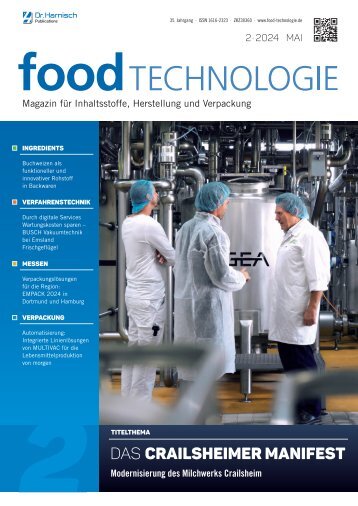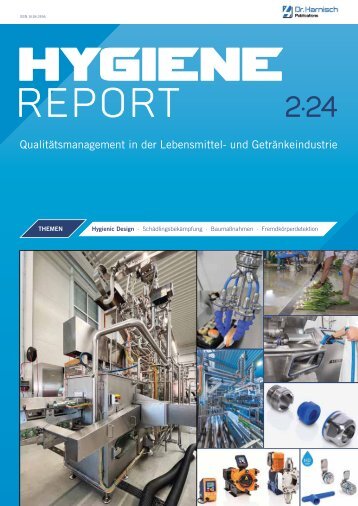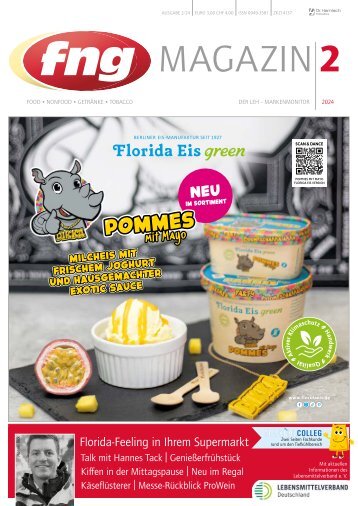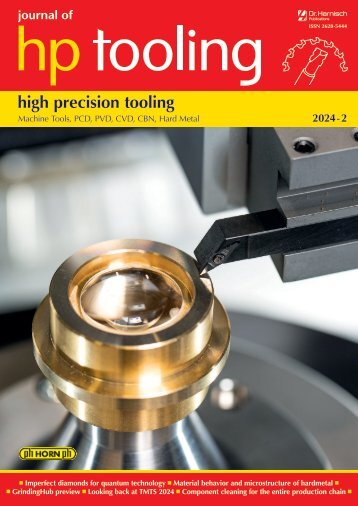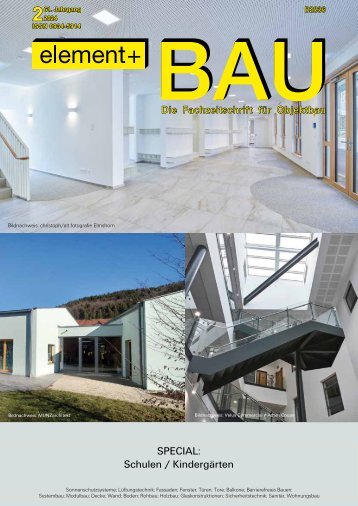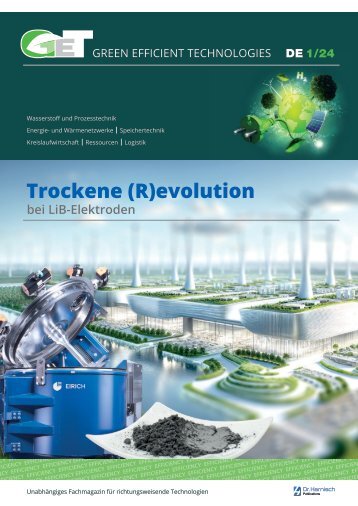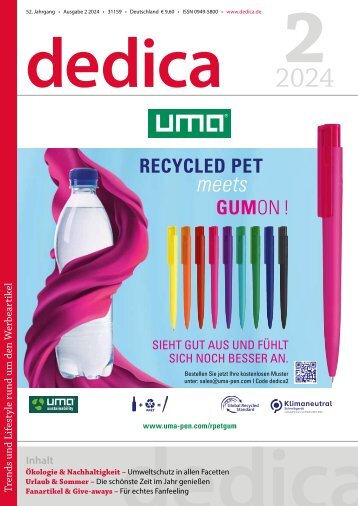WiN woodworking INTERNATIONAL 2020/3
- Text
- Woodworking magazine
- Woodworking
- August
- Products
- Materials
- Circular
- Robot
- Blades
- Profiles
- Briquetting
- Extraction
- Harnischcom
MACHINING TECHNOLOGY New
MACHINING TECHNOLOGY New VRZ shredder for recycling and reprocessing waste wood An absolute ripper Vecoplan’s new VRZ shredder stands out in particular due to its rotor: Instead of conventional cutting tools, this unit is equipped with sickleshaped ripper teeth. As a result, the machine can even break up and shred wired bales of different materials. The developers placed great emphasis on a robust design. Little maintenance is required – and if any work is needed, it is quickly completed. belts, clutches or hydraulic units. This means that they require very little maintenance – unlike hydraulic drives. What is more: Because there is less mass to be propelled, they achieve a high level of efficiency. Operators therefore enjoy considerable energy savings. The drives, which have a capacity of 2 x 138 kilowatts, are completely insensitive to tramp materials. They are also very dynamic, thereby improving start-up and reversing behaviour. This means that the VRZ is also suitable for tough, difficult materials. “At our customers, the shredders usually work uninterrupted for a very long period,” says Martin Baldus, Head of “Industrial Shredding” development at Vecoplan AG. The machines can, for example, prepare material for the combustion furnaces in cement works or efficiently shred sales packaging made from plastic, metal and composite materials that has been collected in yellow bags as well as household waste. “During the development of the new VRZ series shredder, we placed great emphasis on making it robust, resistant to intrusive materials, reliable and low-maintenance,” explains Baldus. That is why the developers did not equip the rotor with cutting tools but with sickle-shaped ripper teeth. These rip the material apart – the VRZ can even handle wirewrapped bales reliably. As a result, this extremely powerful machine is also suitable for reprocessing waste wood – for example for the efficient shredding of root bales or entire planks and beams, which often contain tramp materials such as nails. The new shredder in the VRZ series is robust, resistant to intrusive materials, reliable and low-maintenance. “During the development phase, it was important for us to keep the operating and maintenance costs for plant operators as low as possible,” says Baldus. “Components such as wear-resistant and replaceable sealing elements at the rotor and side wall prevent materials from becoming lodged between the front surface of the rotor and the machine housing, for example. What is more: The optimised machine design means that the cutting frame and rotors can be replaced quickly. This means that time-consuming maintenance work such as reinforcing welding work can be performed outside of the machine. This considerably reduces downtimes. “Our new VRZ is designed to remain operational for as long as possible – even if wear does occur,” promises the expert from Vecoplan. www.vecoplan.de For the rotors, Vecoplan makes use of the dynamic, high-torque, quick-start HiTorc drives. These have no mechanical components such as Vecoplan’s VRZ stands out in particular due to its rotor: Instead of conventional cutting tools, this unit is equipped with sickle-shaped ripper teeth. 12 No. 3 • August 2020
SCIENCE The use of adhesive bonding technology in the circular saw production written by Michael Stroka, Thomas Götz and Andreas Gebhardt, Fraunhofer Institute for Manufacturing Engineering and Automation IPA Today, the German circular saw blade industry, predominantly small and medium-sized enterprises (SMEs), faces multiple challenges. In order to continue to meet the customer requirements in terms of tool performance, sustainability and machining quality, new technologies must be taken into account. This helps to maintain market leadership in the competitive global environment. To encounter the challenges of producing high quality saw blades with outstanding performance new technologies play a key role for the manufacturers. Within the framework of the project “Innovationsforum Zerspanwerkzeuge”, funded by the Federal Ministry of Education and Research (BMBF), suitable technologies and innovative solutions for SMEs were identified by the Fraunhofer Institute for Manufacturing Engineering and Automation IPA. Alternative manufacturing methods for product and process optimization have to be considered in research and the development of new generations of saw blades. The manufacturing chain of saw blades A particular advantage of the joining process is the material independence of the joining partfigure 1: design of a circular saw blade [Fraunhofer IPA, photographer: Rainer Bez] Sawing machines are used at the beginning of the production chain in almost all areas of industrial production to cut to length raw materials made of different materials such as wood, stone or metal. Circular sawing processes in particular are characterised by high output with high accuracy. As circular saw blades, composite tools consisting of a steel body, the so-called steel blade, with saw teeths made of hard metal are commonly used (see figure 1). In rare cases the teeth are clamped or screwed onto the body. In the production of circular saw blades, brazing is currently the most commonly used joining method for producing the connection between a carbide tooth and a steel body. Low-heat joining through the use of bonding technology Structural adhesives offer a competitive alternative to the established soldering process for the high-strength connection of saw teeth to steel blades. Bonding is a low-heat joining process using an adhesive. According to DIN 8593-8 (DIN 8593-8:2003-09) adhesives are non-metal materials which bond assembly parts by means of surface adhesion (adhesion through wetting and interlockability) and internal strength (cohesion through inter-molecular attraction). The functional principle of the adhesive bond is shown schematically in figure 2. The brazing process takes place at temperatures from 700°C and thus exerts a high thermal load on the two joining partners. With circular saw tools, this can lead to distortion due to the low thickness of the steel blades. The soldering process further restricts the cutting materials that can be used, because many cutting materials are not suitable for a brazing process. (Stroka et al. 2018) figure 2: schematic representation of an adhesive bond (Habenicht 2009) No. 3 • August 2020 13
- Seite 1 und 2: ISSN 1438-1672 · Vol. 38 · No. 3/
- Seite 3 und 4: EDITORIAL Eric Schäfer Editor It's
- Seite 5 und 6: Impressum ISSN 1438-1672 WiN - wood
- Seite 7 und 8: COMPANIES Dream Villa in German Tus
- Seite 9 und 10: COMPANIES Giardina Group takes over
- Seite 11: MACHINING TECHNOLOGY Pressing and s
- Seite 15 und 16: SCIENCE Fully carbide-tipped circul
- Seite 17 und 18: TOOLS The silent saw Silence, to ke
- Seite 19 und 20: ARCHITECTURE Reduce the climate imp
- Seite 21 und 22: ARCHITECTURE On trend - wood for in
- Seite 23 und 24: DECORS Fully automated flexographic
- Seite 25 und 26: SURFACES High-end designs made poss
- Seite 27 und 28: USER REPORT The EOAT with the six K
- Seite 29 und 30: USER REPORT Warehouse for wooden pl
- Seite 31 und 32: EVENTS First Rosenheim LIGNA.Confer
- Seite 33 und 34: FAIRS New dates and formats for Fer
- Seite 35 und 36: Guide to Products and Manufacturers
Unangemessen
Laden...
Magazin per E-Mail verschicken
Laden...
Einbetten
Laden...









































